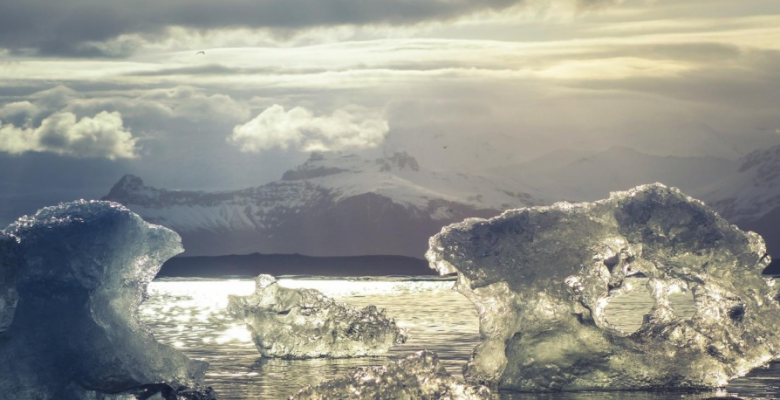Antarctica is often perceived as a frozen, isolated expanse of ice. However, its coastal waters are home to particularly sensitive biological ecosystems, where any variation in physical or chemical parameters can trigger rapid ecological responses. Identifying the forces that redefine these balances is a scientific priority.
by Laurie Henry
The coastal ocean of the western Antarctic Peninsula plays a central role in the ecological functioning of the polar region. While it is one of the most productive in Antarctica, it is also one of the most affected by global warming. The rapid rise in temperatures is causing accelerated glacier melt, which is altering the availability of light and nutrients within the different ocean layers.
A study conducted by the Jet Propulsion Laboratory (Caltech) and a group of researchers from the British Antarctic Survey, among others, highlights the now predominant role of glacial meltwater in the development of phytoplankton. This dynamic calls into question the central role historically accorded to sea ice in controlling Antarctic biological production.
Glacial melt gradually influencing coastal ecosystems
The rapid warming of the western Antarctic Peninsula, by more than 3.7°C during the 20th century compared to 0.6°C for the global average, is causing massive glacier melt. This melt releases increasing amounts of fresh water into coastal ocean areas known as sGMW (sea surface glacial meltwater). Although their role has long been considered secondary, recent work now shows that these coastal freshwater areas play a fundamental role in the structure of marine ecosystems.
The glaciers of the western Antarctic region are mainly in the form of marine fronts. They melt on the surface but also through subglacial and submarine discharges. Freshwater inputs vary greatly depending on glacial morphology, locally influencing the chemical composition and physical structure of the water. In some areas, the fraction of sGMW-type water can exceed 5% at the surface in summer, a level sufficient to alter salinity, water density and vertical exchanges.
This freshwater is not neutral, as it carries iron, manganese, silicates and other elements essential for the growth of phytoplankton, the first link in the marine food chain. In Andvord Bay, for example, dissolved iron concentrations of up to 13 nanomoles per litre have been observed in autumn, sufficient quantities to actively stimulate phytoplankton growth in waters that are usually poor in nutrients.
sGMW-type waters also influence the physical dynamics of ocean layers, promoting stratification, limiting vertical mixing and causing biomass to concentrate near the surface where light is available. On a regional scale, this transformation of the properties of the marine environment requires a reconsideration of the role of sGMW-type waters as a driver of productivity in coastal polar environments.
